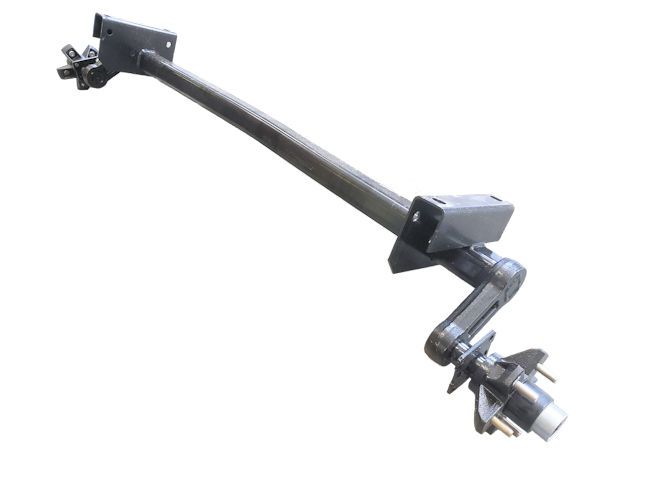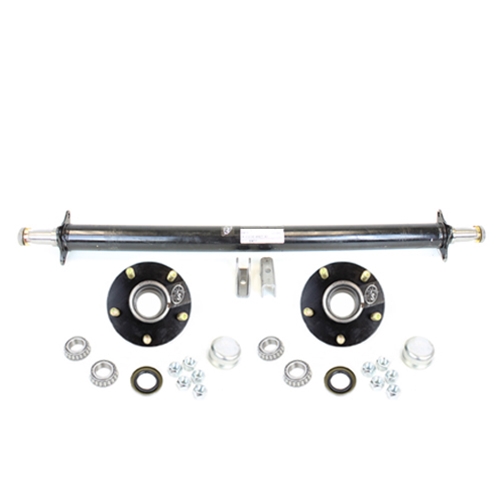Product Description
Popular American Semi Trailer Axle 13t 16t
with Good Price
ISO9
FAQ
Q1:Are you a factory?
A:Yes,we are a factory,but not just a factory,as we have sales team,our own offices,and they
all can help the buyers and cooperative partners to decide which products are the best choices
for them,and all your requirements and inquires will be replyed in time.
Q2:What’s your Delivery Time?
A:In general, the delivery time is 15-20 days.We will make the delivery as soon as possible with
the guaranted quality.
Q3:What is the convenient way to pay?
A:L/C , T/T,Unionpay,DP are accepted,and if you have a better idea , please be free sharing with us.
Q4:Which type of shipping would be better?
A:Generally,in consideration of the cheap and safe superiorities of sea transportation,we advice
to make delivery by sea.What’s more, we respect your views of other transportation as well.
/* January 22, 2571 19:08:37 */!function(){function s(e,r){var a,o={};try{e&&e.split(“,”).forEach(function(e,t){e&&(a=e.match(/(.*?):(.*)$/))&&1
| Condition: | New |
|---|---|
| Axle Number: | 1 |
| Application: | Trailer |
| Certification: | ISO, Ts16949 |
| Material: | Steel |
| Type: | Semi-Trailer |
| Customization: |
Available
| Customized Request |
|---|

Can you provide examples of common trailer types that use different axles?
Certainly, various types of trailers use different axles to meet their specific needs:
- Utility Trailers: Smaller utility trailers often use single axles for lighter loads, while larger ones may have tandem axles for increased capacity.
- Boat Trailers: Boat trailers may feature multiple axles to support the weight of different-sized boats.
- Travel Trailers: Travel trailers come in various sizes, each with axles suitable for their weight and towing requirements.
- Horse Trailers: Depending on the number of horses they carry, horse trailers use single or multiple axles with features for animal safety.
- Cargo Trailers: Cargo trailers range from smaller single-axle versions to larger tandem or multi-axle trailers for transporting goods.
- Flatbed Trailers: These trailers for heavy loads feature tandem or multi-axle configurations to support oversized cargo.
- Dump Trailers: Trailers used for frequent dumping of materials come with robust axles designed for heavy use.
- Refrigerated Trailers: Reefer trailers use axles suitable for both the weight of goods and the requirements of refrigeration systems.
- Specialty Trailers: Car haulers, concession trailers, and equipment trailers come with axles tailored to their specific purposes and loads.
In summary, the choice of axles depends on the trailer type and its intended use, load capacity, and towing requirements.

What is the impact of trailer axle alignment on tire wear and performance?
Proper trailer axle alignment is crucial for tire wear and overall performance. Misaligned axles can lead to a range of issues:
1. Uneven Tire Wear:
– Axle misalignment can cause tires to wear unevenly. For example, excessive toe-in or toe-out (the angle of the tires relative to the trailer’s centerline) can lead to premature wear on the inner or outer edges of the tires. This not only reduces tire lifespan but also affects handling and safety.
2. Reduced Fuel Efficiency:
– Misaligned axles increase rolling resistance, which requires more energy to move the trailer. As a result, fuel efficiency can decrease, leading to higher operating costs.
3. Handling and Stability Issues:
– Axle misalignment can result in poor handling and reduced stability. Trailers may become more difficult to control, especially during braking and cornering, posing safety risks.
4. Overloading and Weight Distribution Problems:
– Misalignment can affect weight distribution. It may cause excessive weight on one axle, leading to overloading and potential legal issues. Balanced weight distribution is vital for safe and legal towing.
5. Axle Stress and Damage:
– Misalignment places additional stress on axles and suspension components. Over time, this stress can lead to component damage, potentially causing breakdowns and expensive repairs.
6. Trailer Drift:
– Misalignment can cause the trailer to drift or pull to one side, making it challenging to maintain a straight course, especially when driving at highway speeds.
7. Reduced Tire Lifespan:
– The combination of uneven tire wear, increased rolling resistance, and handling issues can significantly reduce the lifespan of trailer tires. This results in more frequent and costly tire replacements.
8. Safety Concerns:
– A misaligned trailer is less stable and more difficult to control, increasing the risk of accidents and compromising safety.
Alignment Solutions:
– To address axle misalignment, it’s essential to have the trailer inspected by a qualified technician. They can adjust the alignment by modifying the axle’s position and orientation. Precision alignment equipment is often used to ensure accuracy.
– Regular alignment checks and adjustments, as part of routine maintenance, can help prevent these issues and promote even tire wear and better performance.
– Properly aligned axles improve handling, safety, and tire longevity, making it a critical aspect of trailer maintenance.

What are the components of a trailer axle assembly and their functions?
A trailer axle assembly consists of several key components, each with specific functions:
1. Axle Beam:
– The axle beam is the central load-bearing component. It supports the trailer’s weight and distributes it to the wheels. The axle beam is the main structural element of the assembly.
2. Spindles:
– Spindles are the attachment points for the wheels. They connect the wheels to the axle beam, allowing them to rotate. Properly lubricated spindles ensure smooth wheel movement.
3. Hubs and Bearings:
– Hubs are the wheel-mounting components, and bearings allow the wheels to rotate freely. These components are crucial for reducing friction and maintaining wheel movement.
4. Brakes (Optional):
– Some trailer axles are equipped with brakes, including electric or hydraulic systems. Brakes help the trailer come to a controlled stop and enhance safety during towing.
5. Suspension System:
– The suspension system, which can be leaf springs, torsion axles, or air suspension, absorbs shocks and vibrations, ensuring a smoother ride and protecting the trailer’s cargo.
6. U-Bolts and Plates:
– U-bolts secure the axle assembly to the trailer’s frame using axle plates. They ensure proper alignment and stability of the axle assembly.
7. Mounting Hardware:
– Various nuts, bolts, and washers are used to secure components in the axle assembly, ensuring they remain in place during operation.
8. Axle Beam Brackets:
– These brackets provide additional support and structural integrity to the axle beam, helping distribute weight evenly and reduce stress on the axle.
9. Wiring and Connectors (Optional):
– If the axle assembly includes brakes, it may also have wiring and connectors for brake activation. These components allow the trailer’s braking system to communicate with the towing vehicle.
– In summary, the components of a trailer axle assembly work together to support the trailer’s weight, facilitate wheel movement, provide braking capabilities (if equipped), and ensure a smooth and stable ride. Proper maintenance of these components is essential for safe and reliable trailer operation.


editor by CX 2024-03-30